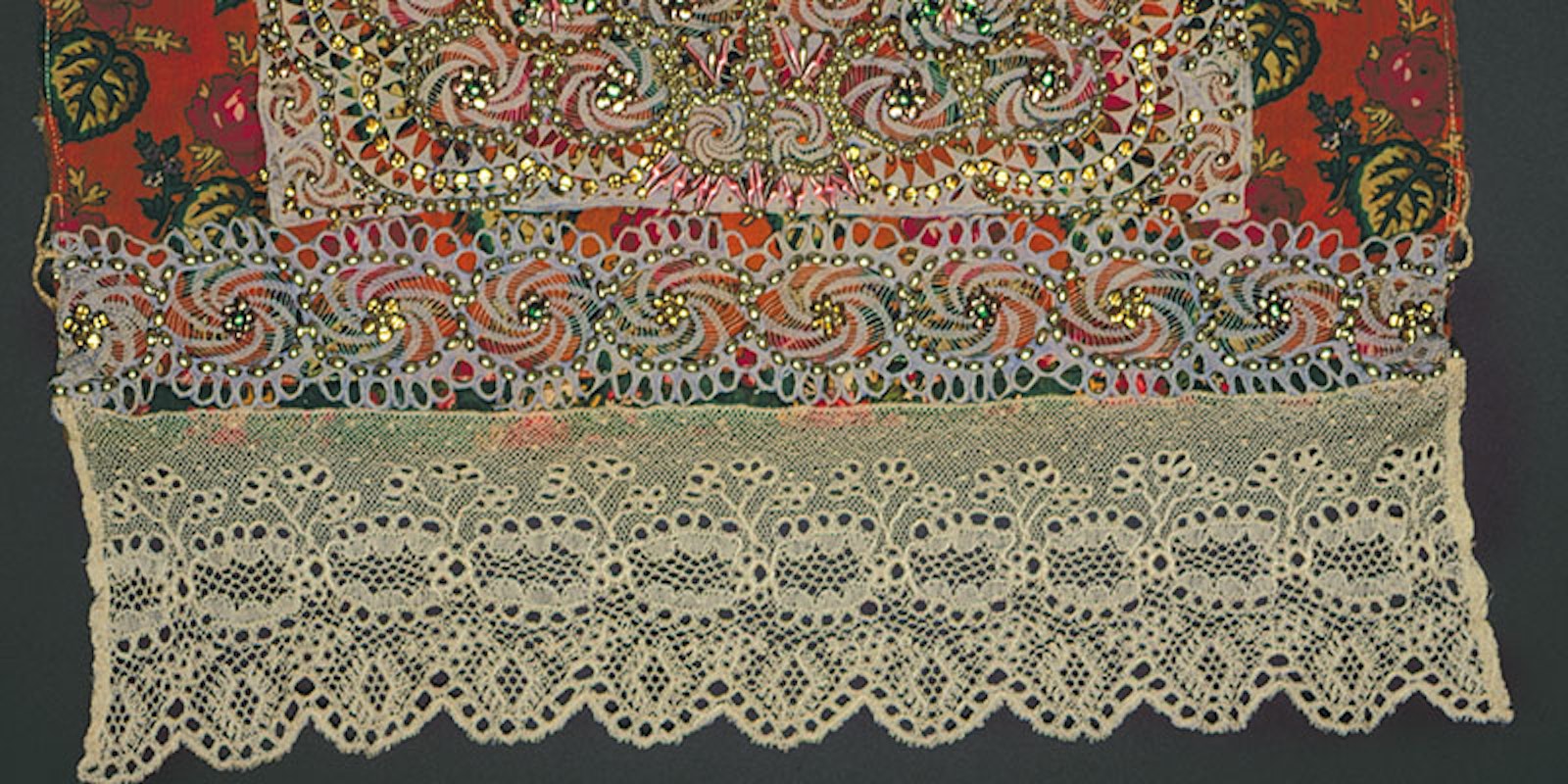Needlework from the Seven Continents
The next stop on our tour of needlework from the seven continents is Europe. In PieceWork’s July/August 2002 issue, Helene Baine Cincebeaux introduces us to the beautiful beadwork of Central Europe in her article “The Beaded Glory of Czech and Slovak Folk Dress.” Here’s an excerpt from this fascinating article.

Wedding shawl (_plena_). Blata (southern Bohemia), Czech Republic. Circa 1850. From the Baine/Cincebeaux Collection. Photo by Helene Cincebeaux.
Beginning in the early seventeenth century in the Blata region in Bohemia, Czech Republic, beads decorated the sheet-sized, lace-trimmed wedding shawls (plena). Flower and heart motifs adorned three corners and tiny seed beads in bright colors outlined each embroidered motif. The most heavily decorated corner hung down the bride’s back; the other two were tied in front to frame her face. Textile experts believe that it would have taken at least two years to create such a shawl.
In the Trebon and Sobeslav/Veseli areas of southern Bohemia in the Czech Republic, >scales from carp were cut into shapes (flowers, leaves, and goddesses) and holes pierced while still fresh. The scales were allowed to harden, and then sewn on with threads and beads to wedding vests and aprons. One apron and-vest combination glitters with some 2,500 fish scales affixed with 5,000 beads.

Beaded wedding attire: groom’s hat, bride’s vest, and bride and groom’s ribbons. Podluzi region of southern Moravia, Czech Republic. Twentieth century. Photo by Helene Cincebeaux.
In many Moravian villages in the Kyjov region and Slovak villages from Drahovce in the west to Detva in the center, a beaded wedding cap was a traditional gift to a bride by her godmother. So expensive was the cap that a cow or a piece of land might have to be sold to finance it. Some caps were embellished with mirrors as added protection against evil—if evil approached, it would look in the mirror, see its reflection, and be frightened away.

Juliana Van Meter’s “A Choker with a Slovak Motif to Bead Embroider,” also included in the July/August 2002 issue of PieceWork. Crystal bead trays courtesy of Dustin Wedekind, Loveland, Colorado. Silver scissors courtesy of Loene McIntyre, Fort Collins, Colorado. Vietnamese box courtesy of Judy Berndt, Fort Collins, Colorado. Photo by Joe Coca.
If you’re just joining us on our journey, catch-up by reading about the amazing needlework of Asia and Antarctica. To read more about the exquisite beadwork of Central Europe, read the rest of Helene Baine Cincebeaux’s article, “The Beaded Glory of Czech and Slovak Folk Dress,” inPieceWork's July/August 2002 issue. Want to create your own Czech and Slovak inspired beadwork, bead embroider Juliana Van Meter’s “A Choker with a Slovak Motif to Bead Embroider,” also included in the July/August 2002 issue.
—Elizabeth Prose

